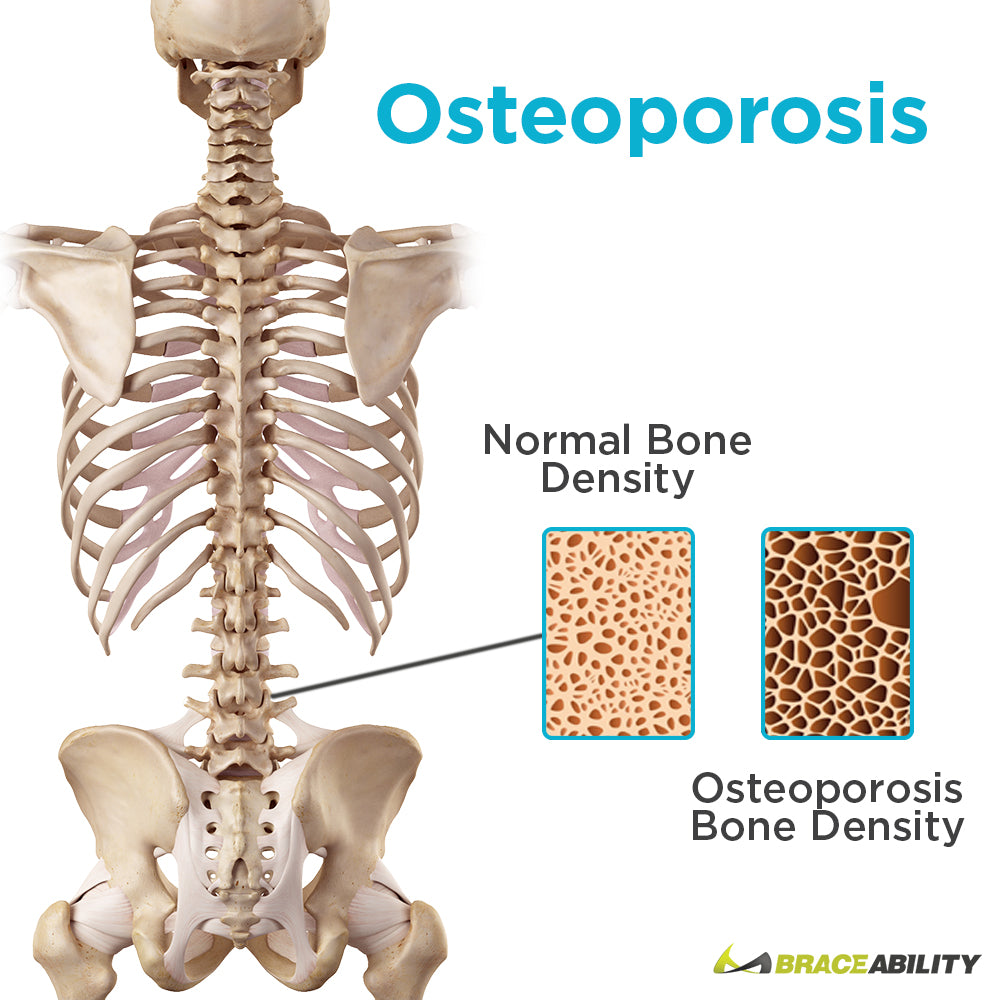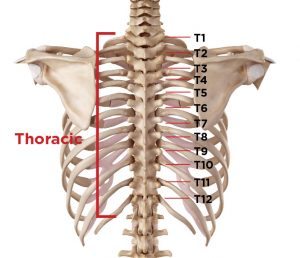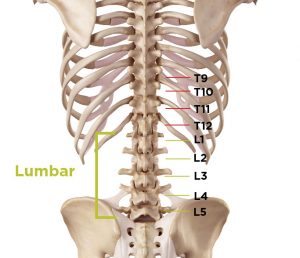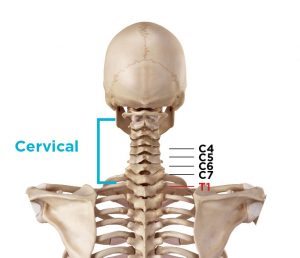Types of Vertebrae Back Pain: Cervical, Thoracic, & Lumbar
 There are 24 bones that make up your spine, known as the cervical, thoracic and lumbar vertebrae that along with the fused vertebrae that form the sacrum and coccyx. These spinal discs help to support your upper body and allow movement. As with most structures of the back, injury and disease can compromise their function and cause back vertebrae pain and discomfort. The good news is the pain in your vertebrae can usually be treated using conservative methods, such as resting, wearing a back or neck brace, exercising, or seeing a chiropractor.
There are 24 bones that make up your spine, known as the cervical, thoracic and lumbar vertebrae that along with the fused vertebrae that form the sacrum and coccyx. These spinal discs help to support your upper body and allow movement. As with most structures of the back, injury and disease can compromise their function and cause back vertebrae pain and discomfort. The good news is the pain in your vertebrae can usually be treated using conservative methods, such as resting, wearing a back or neck brace, exercising, or seeing a chiropractor.
If surgery is needed, there are a number of relatively non-invasive surgical procedures as well as post-surgery back braces to ensure recovery goes as smoothly and quickly as possible.
Vertebrae Pain & Degeneration
 Over time, components of the vertebrae are subject to wear and tear. This can wear down the cartilage that covers the bony structures, cause the joints to deteriorate, and result in the loss of bone density—especially for those with osteoporosis.
Over time, components of the vertebrae are subject to wear and tear. This can wear down the cartilage that covers the bony structures, cause the joints to deteriorate, and result in the loss of bone density—especially for those with osteoporosis.
Degeneration of the vertebrae can be seen anywhere in the spine, but it is most often a source of pain in cervical vertebrae or lumbar vertebrae. The lumbar spine withstands the most force and the cervical spine allows for more movement than the mid-back area. Thoracic vertebrae function is more about stability than motion or load bearing.
Lumbar and Thoracic Vertebral Fracture
Fractures of the thoracic and lumbar vertebrae can also be a product of aging, especially if one has bone density loss due to osteoporosis. In such cases, this typically results in a compression fracture in thoracic vertebrae or lumbar vertebrae injury. The weight-bearing function of the thoracic vertebrae and especially the lumbar vertebrae makes them more likely to break than the cervical vertebrae. The junction between the thoracic and the lumbar spine is also sometimes the site of fractured thoracic vertebrae.
A vertebral fracture can also be caused by high-energy trauma, such as a fall from a height or being in a car accident. Depending upon the nature of the trauma, this might cause a compressed thoracic vertebra or a number of other types of breaks.
A broken thoracic vertebra or lumbar vertebrae typically cause moderate to severe pain on vertebrae that is made worse by movement. If the spinal cord or nerve roots are impacted, one might also experience numbness, tingling, weakness, and bowel or bladder dysfunction with a lumbar or thoracic vertebrae injury.
Lumbar or Thoracic Vertebrae Pain from Wedging
Compression fractures can result in the vertebrae taking on a triangular or wedge-like shape. Wedging of thoracic vertebrae or the lumbar vertebrae can be another source of discomfort in the corresponding regions of the back. This most often affects either the lower thoracic vertebrae of the spine. This can be brought on by:- Trauma
- Scheuermann’s disease
- Degenerative changes with aging
This, in turn, can cause spinal curve abnormalities, like kyphosis, which can further stress the back. BraceAbility offers a variety of posture supports that will treat many conditions from poor posture to kyphosis.
Types of Thoracic Vertebrae Injuries

A unique function of thoracic vertebrae is that the ribs attach to a number of thoracic vertebrae. This limits thoracic vertebrae movement and helps to stabilize this part of the spine. However, this function can be strained, which can cause pain in the thoracic vertebrae. This upper vertebrae pain is typically characterized as sharp or stabbing and it may worsen when coughing, sneezing or taking deep breaths. Other thoracic vertebrae problems associated with this type of injury are reduced movement of the spine and possibly radiating pain to the chest or shoulder blade.
Costovertebral Joint Sprain
Your costovertebral joints are located in between your thoracic vertebrae and your ribs. A costovertebral joint sprain refers to the ligaments and cartilage that are located in these joints to be damaged. Usually, an injury to these joints is a result of trauma such as a twisting or reaching too far, or overuse of these components. In addition, having poor posture over time can result in sprains in your costovertebral joints. Try wearing a posture brace (on the left) to help easily correct your problem! Conservative options such as physical therapy, stretching, rest, and exercises can be done to help alleviate your symptoms or pain.Lower Back Vertebrae Pain

The five vertebrae of the lumbar spine are the largest of the spine for good reason—they are subject to the most force. Of these, L3/L4 and L5 L4 vertebrae pain are most common because these bones withstand a disproportionate amount of motion that makes them more vulnerable to degeneration and compression fractures. This can diminish the stability of the lower back, leading to excess motion or spinal deformity/misalignment that can further stress the back and hinder your balance and movement.
Types of Neck Injuries That Cause Cervical Vertebrae Pain

Besides degenerative-related sources of vertebrae neck pain, a pinched nerve due to a bone spur or herniated disc can cause discomfort in the neck, with C7 or C6 vertebrae pain being the most common of the vertebrae in this region. Diseases such as rheumatoid arthritis or cancer can also cause neck pain, vertebrae origin. BraceAbility offers a neck immobilizer that helps to keep the cervical area stabilized and protect it from further injury.
Cervical Thoracic Junction Deformity
Cervical thoracic junction deformity can result in many different factors. For instance, a deformity in your sagittal plane, which basically is when your head isn’t centered properly over your two different planes. Normally, your head should be placed over your pelvis but with this deformity, your head is moved forward. One way to treat this deformity is by wearing a neck or cervical brace to help correct this deformity. Such braces will help train your back to stand up in the right position with good posture.
Cervical Junction Kyphosis
Similar to cervical-thoracic junction deformity, cervical junction kyphosis is a condition that involves your sagittal plane. 'Kyphosis' is a term that refers to an exaggerated forward rounding of your upper back. When this occurs, there is an abnormal curve in your spine moving your head forwards. This may be a birth deformity or a result of the natural aging process.










